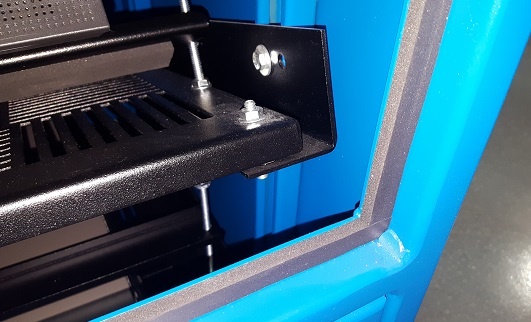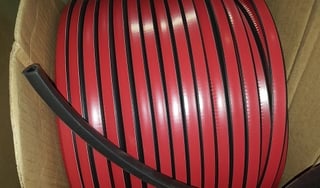Gasketing is used on computer enclosures to provide a leak-tight seal between the enclosure body and its doors and other accessories.

Strong, heavy-duty gasketing is critical to the protection of sensitive electronics housed inside of the enclosure. Gasketing is primarily used to prevent the external (often harsh) environment from entering an industrial enclosure. Some of the most harmful elements can be dust, dirt and water. To ensure the proper performance and a long life, it is important to select an enclosure with the gasket material that is designed and rated for the environment the cabinet will be installed, whether it be inside or outside. According to Peter Taraborelli, in his blog Best Rubber Gasket Materials for Weather Resistance, “The location of a gasket is of utmost importance, especially if it is going to be exposed to the elements. For this reason it’s imperative to choose top quality weather resistant materials to enhance the longevity and performance of outdoor gaskets. There are a number of important factors to think about in regard to weather resistance including sunlight, temperature, ozone, and inclement weather conditions (rain, hail, sleet, snow, etc.).”
There are varying types of gasket used on enclosures – strip, foam in place, and die cut. The most widely used gasketing is strip method. Manufacturers can select the material width and thickness for each strip gasket application, as well as adhesive type, for simple direct application to an enclosure door or covers. All gasket types can be made out of a variety of materials that offer varying temperature ranges, chemical resistance, and other important characteristics.
4 Types of Gasketing
Polyurethane:
Temperature Range of -40° to 158°F (-40° to 70°C)
Easy to create irregular shaped gaskets
Neoprene: Most common material used for gasketing
Most common material used for gasketing
Temperature Range of -67° to 250°F (-55° to 120°C)
Waterproof
Offers excellent resistance against chemical, abrasion and tears
Silicone:
Temperature Range of -40° to 450°F (-40° to 232°C)
Resistance to UV and other weather related elements
High Temperature Resistance
Expensive
EPDM (ethylene propylene diene monomer):
Temperature Range of -40° to 225°F (-40° to 107°C)
Reliable, great sealing strength
Great for outdoor applications
Offers excellent resistance against sunlight, harsh weather, oxygen, oxidants, acid, and aging
Remember, with any product, regular maintenance will ensure optimal performance! Even gasket that is properly specified for the application should be checked for physical damage; such as cutting, tearing or gouging. In some cases, it may even be wise to replace the entire door (if damaged) vs. just the gasket. This will ensure that UL and NEMA ratings are still maintained. Gaskets perform a critical job in keeping particulate matter outside of the enclosure. The appropriate gasket must be rated for the installation environment, or the electronics inside of the enclosure may be in jeopardy. David Greenfield, in his article ‘Enclosures: Critical Specification Factors’ sums up the importance of gaskets, “The gasket is the most critical component for maintaining the enclosure seal, and it must be maintained to ensure proper protection.”
Additional Blogs:
The Importance of Preventative Maintenance for Computer Enclosures
The Importance of Customizable Computer Enclosures

HAVE QUESTIONS? LET US KNOW HOW WE CAN BEST ASSIST YOU!
CONTACT AN 'ITSENCLOSURES EXPERT' AT 1-800-423-9911 -OR-
SEND US AN EMAIL: INFO@ITSENCLOSURES.COM


